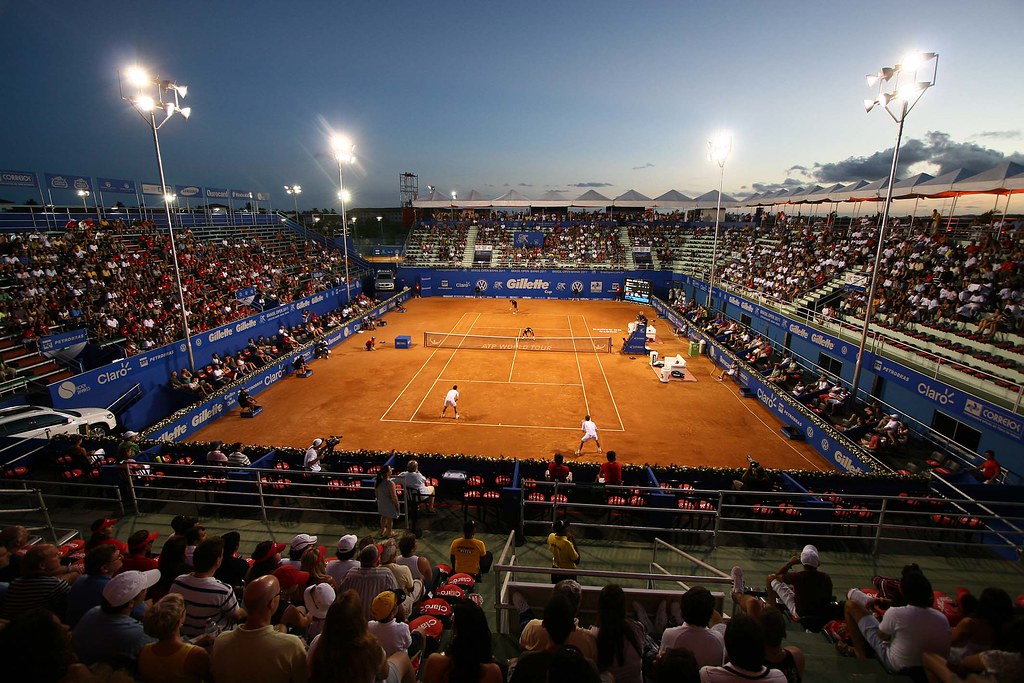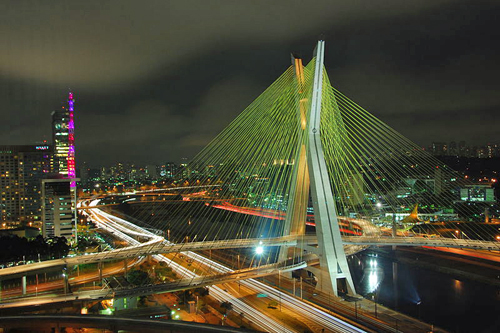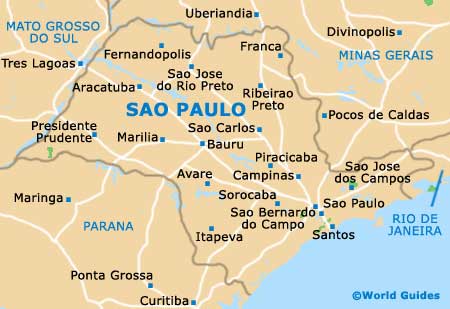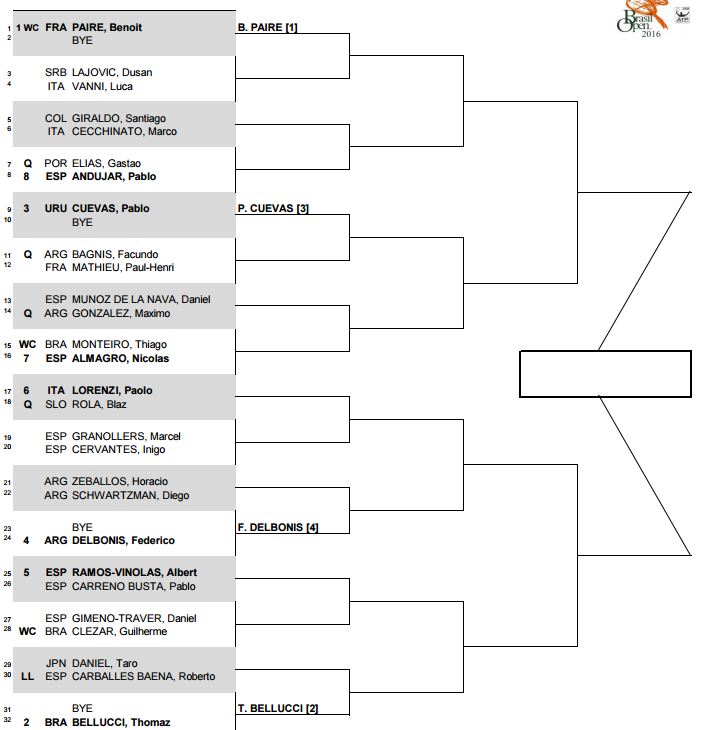DATE: 22 Feb 2016 - 28 Feb 2016
SURFACE: CLAY
PRIZE MONEY: $436,220
FIELD SIZE: 28
DEFENDING CHAMPION: Pablo Cuevas
Seeds:
1 B. Paire
2 T. Bellucci
3 P. Cuevas
4 F. Delbonis
5 A. Ramos-Vinolas
6 P. Lorenzi
7 N. Almagro
8 P. Andujar

Brasil Open Bahia 2011. by Fotos GOVBA, on Flickr
About São Paulo:
The largest city in South America, São Paulo’s cuisine and art is as multinational as its diverse population of 11 million (city) and over 20 million (metro). With the restaurants of the Jardins district serving every food imaginable to diners from around the world, you wouldn’t be out of place going to São Paulo just for the dining. But you’d be missing out on world-class museums, diverse and vibrant neighbourhood tours, and crazy-good shopping.
With one of the world’s fastest-growing metropolitan populations, São Paulo is also the largest city of the Southern Hemisphere and one of the largest conurbations in the world. It is a dynamic late bloomer, having been heavily overshadowed by Rio de Janeiro not only during the colonial era but also throughout the 19th century. Only when coffee became Brazil’s vital export crop in the last decades of the 19th century did São Paulo become a major centre of economic activity with concomitant population growth. Migration, both from Europe and internal, led to great expansion and diversification. When São Paulo served as the main focus of Brazil’s industrialization in the early decades of the 20th century, it rapidly closed the gap with Rio de Janeiro, which shortly before the turn of the century had been 10 times as large.


São Paulo, capital of São Paulo estado (state), southeastern Brazil. It is the foremost industrial centre in Latin America. The city is located on a plateau of the Brazilian Highlands extending inland from the Serra do Mar, which rises as part of the Great Escarpment only a short distance inland from the Atlantic Ocean. The city itself sits in a shallow basin with low mountains to the west. It lies about 220 miles (350 km) southwest of Rio de Janeiro and about 30 miles (50 km) inland from its Atlantic Ocean port of Santos. The city’s name derives from its having been founded by Jesuit missionaries on January 25, 1554, the anniversary of the conversion of St. Paul.


SURFACE: CLAY
PRIZE MONEY: $436,220
FIELD SIZE: 28
DEFENDING CHAMPION: Pablo Cuevas
Seeds:
1 B. Paire
2 T. Bellucci
3 P. Cuevas
4 F. Delbonis
5 A. Ramos-Vinolas
6 P. Lorenzi
7 N. Almagro
8 P. Andujar

Brasil Open Bahia 2011. by Fotos GOVBA, on Flickr
About São Paulo:
The largest city in South America, São Paulo’s cuisine and art is as multinational as its diverse population of 11 million (city) and over 20 million (metro). With the restaurants of the Jardins district serving every food imaginable to diners from around the world, you wouldn’t be out of place going to São Paulo just for the dining. But you’d be missing out on world-class museums, diverse and vibrant neighbourhood tours, and crazy-good shopping.
With one of the world’s fastest-growing metropolitan populations, São Paulo is also the largest city of the Southern Hemisphere and one of the largest conurbations in the world. It is a dynamic late bloomer, having been heavily overshadowed by Rio de Janeiro not only during the colonial era but also throughout the 19th century. Only when coffee became Brazil’s vital export crop in the last decades of the 19th century did São Paulo become a major centre of economic activity with concomitant population growth. Migration, both from Europe and internal, led to great expansion and diversification. When São Paulo served as the main focus of Brazil’s industrialization in the early decades of the 20th century, it rapidly closed the gap with Rio de Janeiro, which shortly before the turn of the century had been 10 times as large.


São Paulo, capital of São Paulo estado (state), southeastern Brazil. It is the foremost industrial centre in Latin America. The city is located on a plateau of the Brazilian Highlands extending inland from the Serra do Mar, which rises as part of the Great Escarpment only a short distance inland from the Atlantic Ocean. The city itself sits in a shallow basin with low mountains to the west. It lies about 220 miles (350 km) southwest of Rio de Janeiro and about 30 miles (50 km) inland from its Atlantic Ocean port of Santos. The city’s name derives from its having been founded by Jesuit missionaries on January 25, 1554, the anniversary of the conversion of St. Paul.


Last edited by a moderator:


